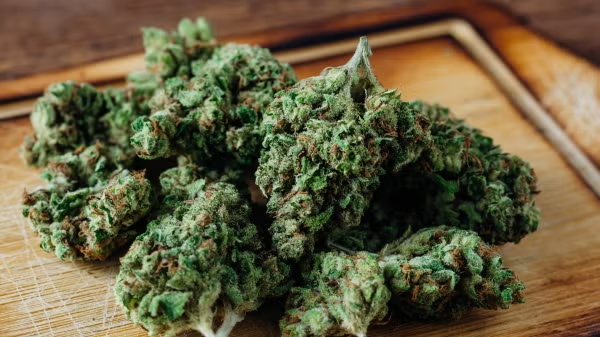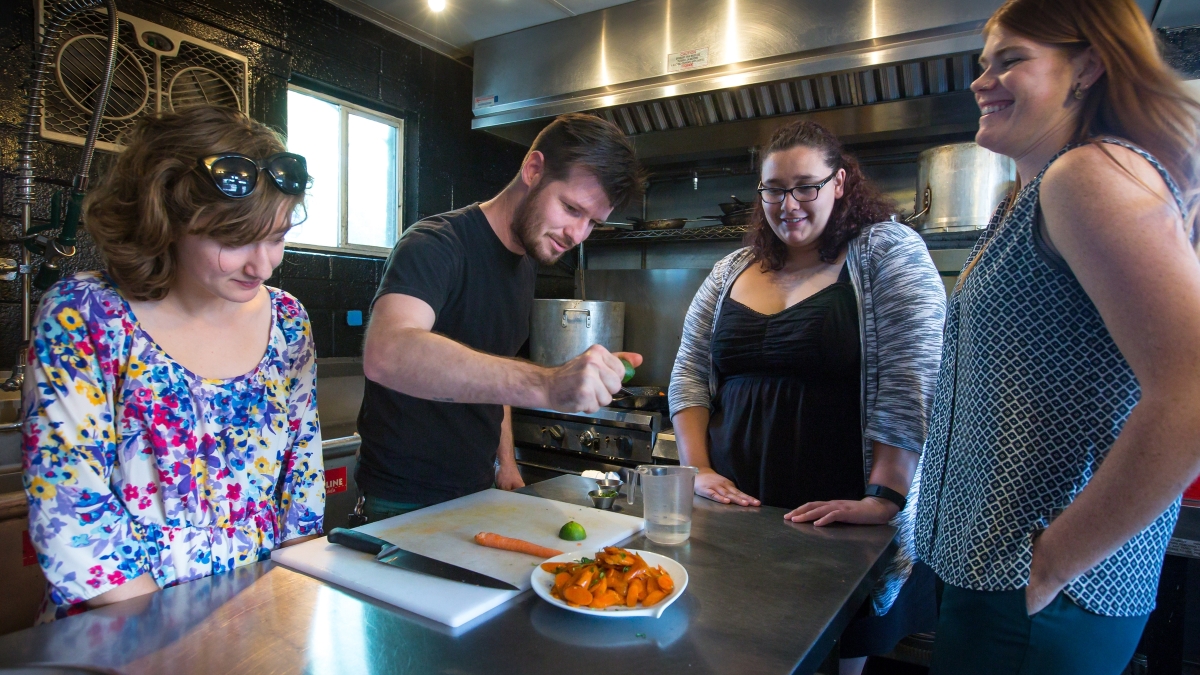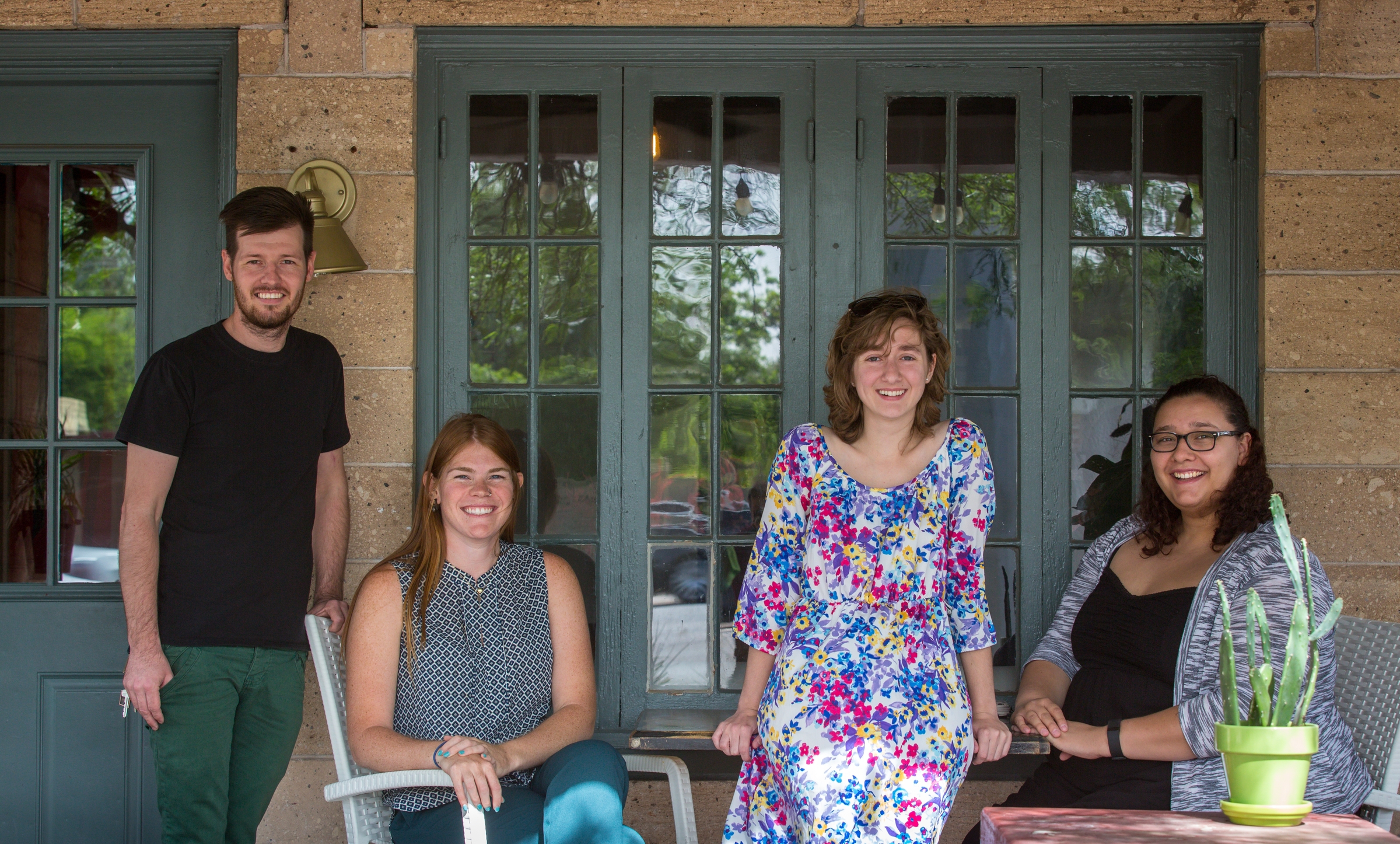Chef Liam Murtagh knows what it’s like to grow up food insecure.
As a child in Glendale, Arizona, his family struggled financially and got by on food stamps and funky nutritional concoctions.
“We’d eat things like cereal with water, or my mom would make syrup by mixing water and sugar. We practically lived on mac and cheese and kielbasa,” said Murtagh, who is the owner and chief executive cook at the Coronado in Phoenix.
“Other times we’d eat at the local VFW, and on a couple of occasions, a church group would bring us a food basket. This was in the early ’90s when there was an economic slowdown. As usually is the case, the poor are usually the first and most affected.”
Those memories motivated Murtagh to become a chef and are why he is throwing his support behind an Arizona State University-sponsored cookbook that features local produce and bilingual recipes, and which will be distributed for free in underserved communities.
“Let’s Eat Local! A Phoenix Farm-to-Table Community Cookbook” was the brainchild of 10 ASU students as part of their NLM-435 class, Service Learning Community Development class. Taught by Sandra Price, a lecturer in the School of Community Resources and Community DevelopmentThe School of Community Resources and Community Development is part of the College of Public Service and Community Solutions., students were asked at the start of the semester to choose a subject matter of importance and to create a “pop-up” organization that could impact a social problem in the community.
They chose to address hunger when they learned of a few jarring statistics: one in five Arizonans, or approximately 1.16 million people, experiences food insecurity. Statistics from America’s 2014 Hunger in America, U.S. Census Bureau data and internal United Food Bank data reveal that one in four of Arizona’s children is not assured of his or her next meal.
“The reason why many farmers markets don’t come to the Phoenix area is because people would say ... ‘How do I eat this? How do I cook this?’ A big part is simply a lack of knowledge, and our bilingual cookbook addresses these issues.”
— Samantha Contreras, ASU communications major
Student research and a handful of visits from local leaders working on hunger led them to focus on marrying locally available farm produce and food-insecure communities, also known as “food deserts.”
“A food desert is a place or area that doesn’t have any fresh or natural produce available to that local population because there aren’t any grocery stores or farmers markets in the area,” Price said. “The only options they have to eat are mostly fast-food chains, and we all know that isn’t good nutrition.”
After considering a number of alternatives such as organizing farmers markets, initiating a traveling produce-vendor service and other innovative ideas, the class settled on a community-based bilingual cookbook after learning that much of the 80 or so varieties of local produce are unfamiliar to many residents.
“The reason why many farmers markets don’t come to the Phoenix area is because people would say, ‘I see that this is fresh and healthy, but I don’t know what to do with this. How do I eat this? How do I cook this?’” said Samantha Contreras, a 22-year-old communications major in the Hugh Downs School of Human CommunicationThe Hugh Downs School of Human Communication is part of the College of Liberal Arts and Sciences.. “A big part is simply a lack of knowledge, and our bilingual cookbook addresses these issues.”
From left: Chef/owner Liam Murtagh of the Coronado poses on the front porch of his 100-year-old building with ASU students Angela Lashinske, Katerina Noori and Samantha Contreras on April 25. Murtagh (shown in the top photo making his agave-glazed carrots for the students) is one of several local chefs to donate a recipe for the student-created "Let’s Eat Local!" cookbook. Photos by Charlie Leight/ASU Now
Students said the project forced them to become more familiar with the issue of food insecurity and underserved communities.
“A cookbook is actually a very good way to engage the community and rally the chefs, who care about feeding people outside of their restaurants,” said Angela Lashinske, a 20-year-old senior who is majoring in supply side chain management at the W. P. Carey School of Business. “This project linked our passion with theirs and was an easy way for us to make an impact given our time limit.”
For Katerina Noori, a 23-year-old theater production major in the Herberger Institute for Design and the Arts who volunteers at the St. Vincent de Paul food bank in Phoenix, the project was a way to link her skills.
“As a theater production major, I do mostly backstage work and I make things happen, and this project was kind of similar,” Noori said. “I bring all the pieces together through organization and make sure people are communicating. That really helped me be successful in this project.”
In addition to their community work, students learned the nuances of putting together a book, which was no small feat. They knocked on doors asking chefs for recipes, created an index page of vegetables, worked with five translators to make sure the text was correct and graphically designed the cover page and inside text.
“It was a very collaborative process because we all did a bit of everything,” said Lashinske. “It was a great experience.”
Students are currently raising $6,000 through a GoFundMe page. A $20 donation gets the donor a digital copy; $30 for a physical copy. There are also options that include gift certificates to one of the participating restaurants.
Once that $6,000 total is reached, the class will distribute it for free to residents living in the communities between McDowell Road to the north and South Mountain, and between 16th Street and 19th Avenue, as well as to residents of the Salt River Pima-Maricopa Indian Community. The class will also sell cookbooks to the larger community to help defray printing costs.
More Health and medicine

ASU's Roybal Center aims to give older adults experiencing cognitive decline more independence
For older people living alone and suffering from cognitive decline, life can be an unsettling and sometimes scary experience.Arizona State University is out to improve that experience.Two projects…

Dynamic data duo advances health research
The latest health research promises futuristic treatments, from cancer vaccines to bioengineered organs for transplants to medical nanobots. While these technologies may one day be…

New study reveals high levels of toxins in seized cannabis from Arizona and California
A recent study conducted by researchers from Arizona State University has uncovered alarming levels of Fusarium mycotoxins in illicit cannabis samples seized in Arizona and California.The study found…



